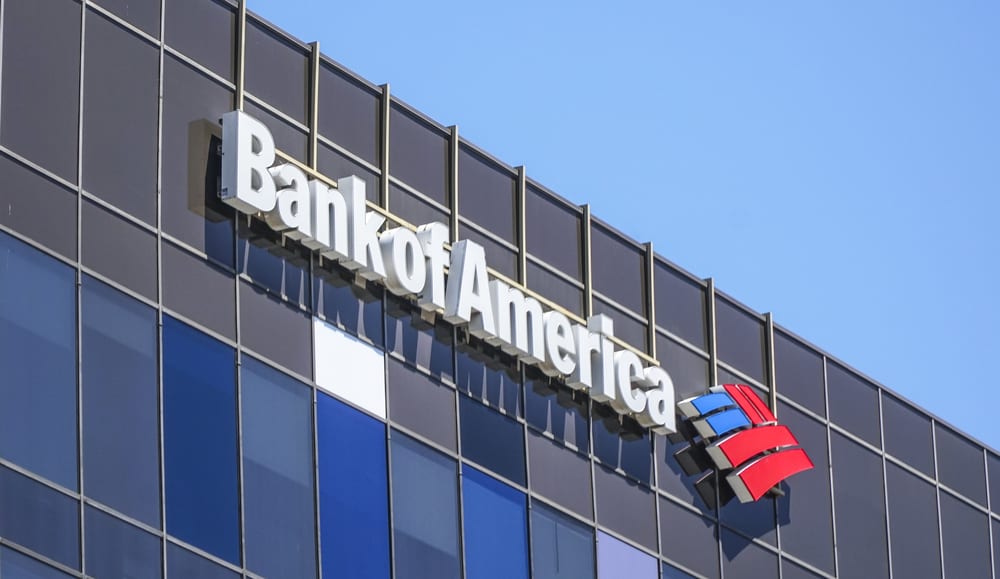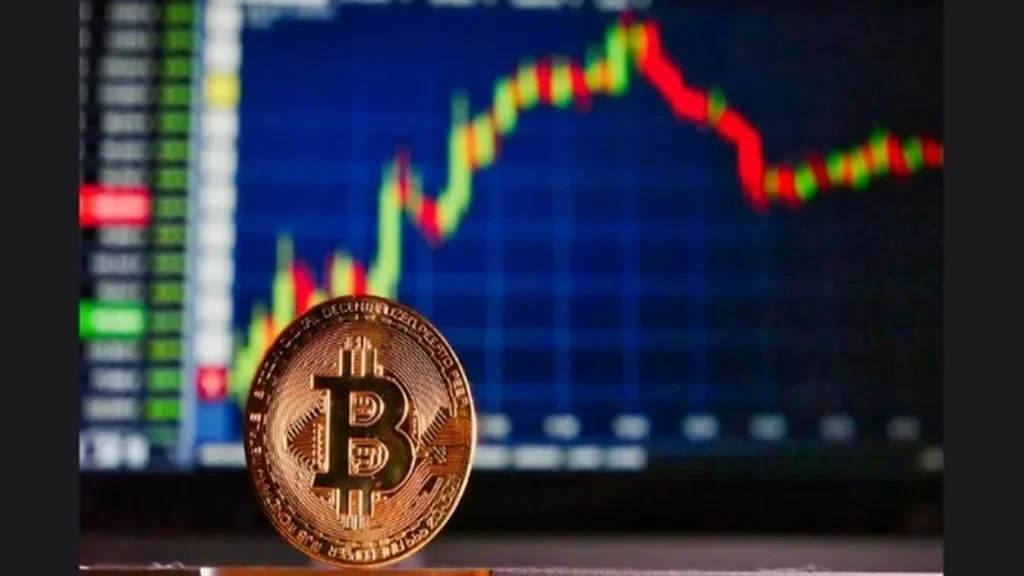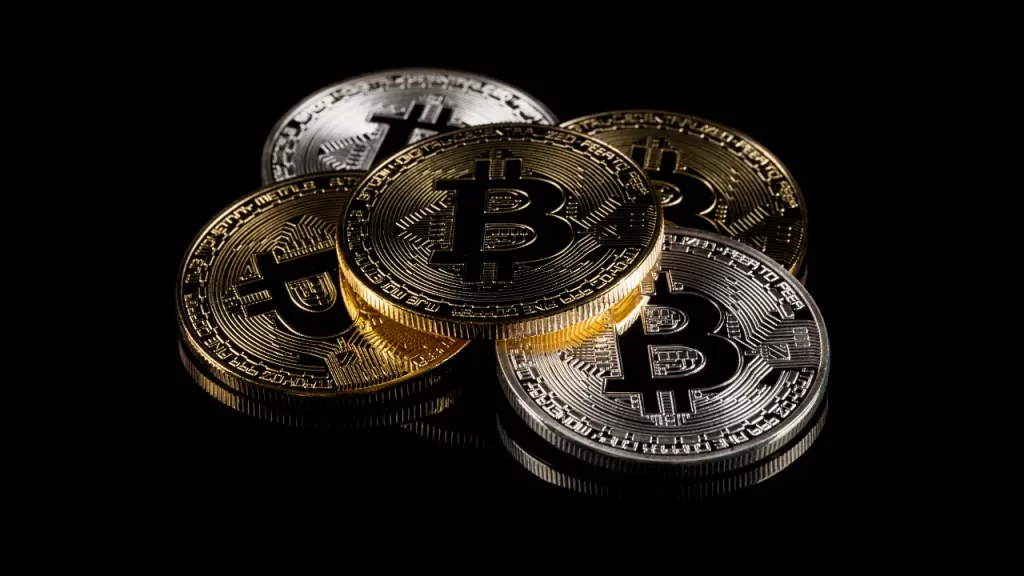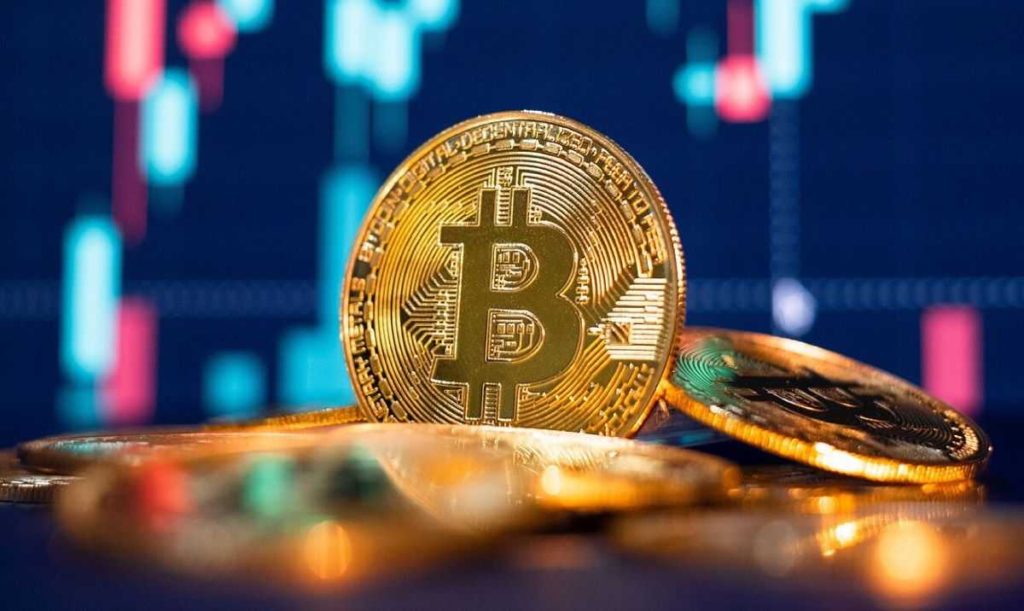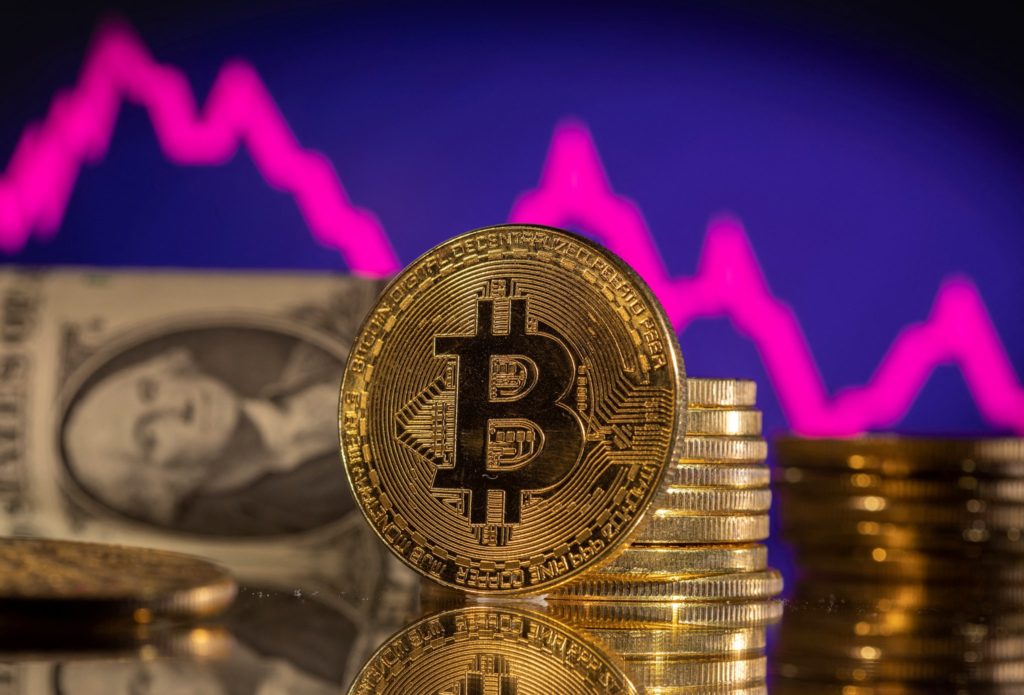In a significant move reflecting the evolving landscape of digital finance, Bank of America (BoA) has expressed openness to issuing its own dollar-pegged stablecoin, contingent upon obtaining regulatory approval and the establishment of clear legal frameworks. This development underscores the growing interest of traditional financial institutions in integrating blockchain technology and digital currencies into their services.
Embracing Digital Innovation
BoA’s consideration of a stablecoin aligns with its broader strategy to enhance digital offerings. The bank has been investing heavily in digital tools and technology, aiming to meet the changing needs of its customers. Despite this digital push, BoA emphasizes the continued importance of in-person services for complex financial needs, indicating a balanced approach to modernization.
Regulatory Landscape and Industry Perspectives
The potential launch of a BoA stablecoin comes at a time when regulatory sentiments toward digital currencies are shifting. Federal Reserve Governor Christopher Waller has highlighted the potential of stablecoins to extend the reach of the U.S. dollar, advocating for a clear regulatory framework that would allow both banks and non-banks to issue dollar-pegged digital currencies. Similarly, Federal Reserve Chair Jerome Powell has affirmed the central bank’s support for developing such frameworks, emphasizing the need for clear guidelines to ensure stability and trust in the financial system.
Industry leaders are also weighing in on the discussion. Circle CEO Jeremy Allaire has called for mandatory U.S. registration of all dollar-backed stablecoin issuers, arguing that non-U.S. providers should not be allowed to circumvent American regulations while serving U.S. customers. This perspective highlights the importance of a level playing field and the need for comprehensive regulatory oversight to protect consumers and maintain market integrity.
Implications for the Financial Sector
BoA’s readiness to issue a stablecoin, pending regulatory clarity, signifies a broader trend of traditional banks exploring deeper involvement in cryptocurrency and blockchain technologies. As lawmakers advance stablecoin legislation to strengthen the dollar’s dominance globally, the intersection of blockchain and banking could redefine U.S. financial services. Clear regulations are anticipated to encourage more financial institutions to participate in the digital currency space, potentially leading to increased innovation and competition.
Bank of America’s potential entry into the stablecoin market reflects the dynamic and rapidly evolving nature of the financial industry. As regulatory frameworks develop, the integration of traditional banking services with digital currencies could offer consumers more efficient and secure financial products, while also reinforcing the global position of the U.S. dollar in the digital age.
Since spot Bitcoin ETFs were launched in the US in early 2024, they have attracted tens of billions of dollars of inflows, and this institutional demand was the primary driving force for BTC’s rally over the last 12 or so months.
Ether ETFs were also approved by the SEC last year, but their inflows have been relatively limited thus far.
Market experts believe that spot Bitcoin ETFs will continue to be the most popular crypto products available to institutional investors, though other crypto ETFs – including funds made up of a basket of cryptos – are likely to attract significant inflows as the market matures.
Speaking to Crypto Intelligence News, Adrian Fritz, Head of Research at 21Shares, explained that Bitcoin has proven more popular due to its value proposition being more clearly defined, but predicted that demand for non-Bitcoin ETFs is likely to increase.
“This cycle has clearly been centered around Bitcoin. As the most established crypto asset, it is widely seen as the safest choice, with a straightforward value proposition as digital gold, a well-defined regulatory status as a commodity, and strong institutional trust,” Fritz said.
“Naturally, investors—especially institutions—feel more comfortable allocating to BTC over other crypto assets.
“While this trend may persist in the short term, we expect demand for non-Bitcoin products to grow over time.
“As investors become more familiar with the broader crypto ecosystem, they will start exploring opportunities beyond Bitcoin, leading to increased traction and momentum for diversified offerings.”
Roxanna Islam, Head of Sector and Industry Research at VettaFi, echoed this sentiment and noted that Bitcoin is also dominating institutional demand for crypto products outside the US market.
“Bitcoin overall has significantly more demand than other cryptocurrencies–it holds approximately 60% of market share,” Islam told Crypto Intelligence News.
“When packaged into spot ETFs, that dominance is even higher due to retail preference for Bitcoin. While I think there will be demand for other spot crypto ETFs, it will still remain relatively lower than Bitcoin.
“This is similar to markets outside the U.S. where large suites of crypto ETPs are offered, yet Bitcoin ETPs are significantly more popular.”
Islam added that she believes multi-token crypto ETFs “will play a large role in helping investors diversify their crypto holdings, but spot Bitcoin ETFs will likely still dominate in terms of popularity since any mainstream retail investors are satisfied with using just Bitcoin as a crypto play.”
Fritz noted that although Bitcoin ETFs are likely to remain dominant, exchange traded funds made up of numerous cryptocurrencies could eventually become more popular, as seen in the stock market.
“As long as it serves as the primary entry point for institutional investors, single-asset BTC products will likely maintain higher demand in the near term.
“However, as the crypto market matures, investor preferences may shift toward diversified exposure to altcoins beyond Bitcoin—much like in traditional finance, where index funds and sector ETFs are often preferred over single-stock investments.”
With regards to new crypto-based ETF filings, Islam noted that we are already seeing new, non-spot crypto products being developed.
“Filings for new crypto ETFs have extended beyond spot products and are following broader ETF trends including leveraged and buffered ETFs.
“It is likely that these trends will continue to align with the broader ETF market as the crypto ETF ecosystem grows more complex,” she concluded.
Dogecoin (DOGE) has remained one of the most talked-about cryptocurrencies despite its origins as a joke. Initially created in 2013 as a parody of Bitcoin, DOGE has since gained real-world adoption, largely thanks to social media hype and support from figures like Elon Musk.
As the crypto market prepares for another potential bull run in 2025, many investors are wondering: Can Dogecoin reach new all-time highs? This article breaks down Dogecoin’s price forecast for 2025 and beyond based on market trends, expert opinions, and potential catalysts.
Current Market Performance
Dogecoin currently trades at around $0.20, fluctuating alongside broader crypto market trends. DOGE saw a massive surge in 2021, reaching an all-time high of $0.73 in May before crashing alongside other cryptocurrencies. Since then, it has remained a favorite among retail investors but has struggled to regain its former highs.
Short-Term Dogecoin Price Prediction (2024-2025)
Many experts believe the crypto market could enter another bullish phase, benefiting Dogecoin. Here’s what analysts predict for DOGE’s price in the short term:
- Moderate Growth Expected: Most forecasts suggest DOGE could reach between $0.30 and $0.65 by the end of 2025 if market conditions remain favorable.
- Elon Musk’s Influence: Tesla and X (formerly Twitter) continue to be potential catalysts. If Musk integrates Dogecoin payments on X, DOGE could see a rapid price increase.
- Increased Utility: More businesses are accepting Dogecoin for payments, which could support steady price appreciation.
Expert Predictions for 2025
- WalletInvestor: Predicts a price range of $0.15 – $0.25 by late 2025.
- Changelly: Estimates DOGE could hit $0.30 – $0.40 if the crypto bull market takes off.
- CryptoNewz: A more optimistic forecast, suggesting DOGE might touch $0.50 if mass adoption increases.
Long-Term Dogecoin Price Prediction (2026-2030)
Long-term predictions for Dogecoin vary widely, depending on factors such as crypto adoption, regulatory policies, and overall market sentiment.
Bullish Scenario
- If Dogecoin continues to gain traction as a medium of exchange, it could potentially reach $1.00 or higher by 2030.
- Partnerships with major brands or integration into X for payments could be a game-changer.
- The broader adoption of Layer-2 scaling solutions on Dogecoin’s network could improve transaction efficiency, driving price growth.
Bearish Scenario
- If interest in Dogecoin declines or newer meme coins surpass it, DOGE could stagnate or drop below $0.05.
- Regulatory crackdowns on meme coins could hinder its adoption and price potential.
- A prolonged bear market in crypto could keep DOGE’s price below $0.20 for years.
Factors Influencing Dogecoin’s Future Price
Several key factors will determine Dogecoin’s price trajectory in the coming years:
1. Elon Musk’s Endorsement
Musk’s continued support for DOGE has been one of its biggest price drivers. If he integrates Dogecoin payments into Tesla or X (Twitter), its value could surge. However, if Musk shifts focus away from DOGE, its hype could decline.
2. Bitcoin Halving & Market Trends
Bitcoin’s 2024 halving is expected to trigger a crypto bull run, which typically benefits altcoins like Dogecoin. If history repeats itself, DOGE could see significant gains in 2025-2026.
3. Real-World Adoption
More merchants, platforms, and companies are accepting DOGE payments. Increased utility could drive long-term price growth and help it transition from a meme coin to a serious digital asset.
4. Competition from Other Meme Coins
Shiba Inu (SHIB) and newer meme tokens could overshadow Dogecoin if they offer better technology, faster transactions, or stronger communities. The meme coin market is highly competitive, making it crucial for DOGE to stay relevant.
5. Regulatory Challenges
The global crypto market faces growing regulatory scrutiny, and meme coins like Dogecoin could be at risk if governments impose strict regulations. Investors should monitor legal developments closely.
Is Dogecoin a Good Investment?
Dogecoin remains a high-risk, high-reward asset. While it has strong community support and brand recognition, its future price depends on market trends, adoption, and continued hype. Investors should consider:
✅ Pros:
- Strong community backing and mainstream recognition.
- Potential integration into X (Twitter) payments.
- Historically follows Bitcoin’s bull cycles.
❌ Cons:
- Extremely volatile with no fixed supply limit.
- Meme coin competition (e.g., Shiba Inu, Floki, PEPE).
- Dependent on speculation and social media influence.
Conclusion: Will Dogecoin Reach $1?
While $1 DOGE is possible, it would require major adoption, Musk’s backing, and a booming crypto market. Most analysts predict DOGE will stay within the $0.20 – $0.50 range in the coming years, with the potential for higher gains in 2026-2030.
For investors, Dogecoin remains an exciting but speculative asset. It may not have the fundamentals of Bitcoin or Ethereum, but its meme-powered community and Elon Musk factor make it a unique play in the crypto space.
The global M2 money supply’s expansion is emerging as a potential catalyst for a significant Bitcoin rally. Analysts are observing this trend closely, though they advise caution against overcommitting based on this single indicator.
Correlation Between Money Supply and Bitcoin’s Trajectory
Pav Hundal, lead analyst at Australian cryptocurrency exchange Swyftx, discussed the implications of the increasing M2 money supply on Bitcoin’s prospects. He noted, “In normal times, global loosening measures are a pretty reliable lead indicator for crypto.”
Hundal emphasized that current data indicates active spot buyers and highlighted the U.S. government’s recent decision to raise its debt ceiling by $4 trillion as a significant factor.
The year-on-year fixed exchange rate for the M2 money supply of the four major central banks reached 3.65% in January, according to MacroMicro data. Historically, an increase in the global M2 money supply has been associated with higher Bitcoin prices, driven by enhanced liquidity and reduced interest rates.
Analysts’ Perspectives on Potential Bitcoin Surge
Economist Lyn Alden has previously identified a strong correlation between global M2 money supply growth and Bitcoin’s price movements, noting that Bitcoin aligns with global M2 trends approximately 83% of the time.
Investment research entity Bravo Research highlighted that the U.S. money supply has doubled over the past decade, suggesting that this liquidity surge could fuel a parabolic rise in Bitcoin’s value.
Summary
- The global M2 money supply is expanding, a trend historically linked to Bitcoin price surges.
- Analysts warn against over-reliance on M2 growth but acknowledge its potential impact on Bitcoin.
- Swyftx lead analyst Pav Hundal notes that liquidity expansion often benefits crypto markets.
- The U.S. debt ceiling increase by $4 trillion is seen as a contributing factor to rising liquidity.
- The year-on-year M2 growth rate reached 3.65% in January, suggesting increased market liquidity.
- Economist Lyn Alden found Bitcoin follows M2 money supply trends 83% of the time.
- Research firm Bravo Research highlights that U.S. money supply has doubled in a decade, potentially fueling Bitcoin’s next rally.
- While bullish sentiment grows, some experts caution that other macroeconomic factors must be considered before predicting a parabolic rise.
In a significant market movement, U.S. spot Bitcoin exchange-traded funds (ETFs) experienced their largest-ever daily net outflows, totaling $937.9 million on February 25. This marked the sixth consecutive trading day of outflows, coinciding with Bitcoin’s price dipping below the $90,000 threshold.
ETF Exodus Amidst Bitcoin Price Decline
The substantial outflows from these ETFs occurred as Bitcoin’s value decreased by 3.4% over the previous day, reaching a 24-hour low of $86,140 from an intraday high exceeding $92,000. Leading the outflows was the Fidelity Wise Origin Bitcoin Fund (FBTC), which saw a record-setting withdrawal of $344.7 million. BlackRock’s iShares Bitcoin Trust (IBIT) followed with an outflow of $164.4 million.
Other notable outflows included $88.3 million from the Bitwise Bitcoin ETF (BITB) and a combined $151.9 million from Grayscale’s Bitcoin Trust (GBTC) and Bitcoin Mini Trust ETF (BTC).
Cumulatively, these 11 Bitcoin funds have experienced over $2.4 billion in net outflows throughout February, with only four days recording net inflows.
Industry Perspectives on the Outflows
Nate Geraci, President of the ETF Store, expressed his astonishment at the traditional financial sector’s aversion to Bitcoin and cryptocurrencies. In a February 26 post on X (formerly Twitter), he remarked, “Still amazed at how much TradFi hates Bitcoin and crypto. Huge victory laps at every downturn. Hate to break it to you, but no matter how big drawdowns are, it’s not going away.”
Analysts such as BitMEX co-founder Arthur Hayes and 10x Research’s head of research, Markus Thielen, suggest that the majority of Bitcoin ETF investors are hedge funds engaging in arbitrage strategies rather than long-term holders.
Hayes predicted on February 24 that Bitcoin’s price could decline to $70,000 due to continued ETF outflows. He explained that many IBIT holders are hedge funds that went long on ETFs while shorting CME futures to earn yields higher than short-term U.S. Treasurys. As these yields diminish alongside Bitcoin’s price, these funds may unwind their positions, impacting the market further.
Thielen’s research indicates that over half of spot Bitcoin ETF investors are involved in arbitrage, selling ETFs while buying Bitcoin futures to maintain a market-neutral stance. This strategy effectively offsets any directional market impact, suggesting that the outflows may not directly correlate with a long-term bearish outlook for Bitcoin.
Summary
- U.S. spot Bitcoin ETFs saw their largest-ever daily net outflows of $937.9 million on February 25.
- This marked six consecutive days of outflows, with Bitcoin’s price dropping below $90,000.The Fidelity Wise Origin Bitcoin Fund (FBTC) led the withdrawals with $344.7 million in outflows.
- Other major funds, including BlackRock’s IBIT and Grayscale’s GBTC, also experienced significant withdrawals.
- Over $2.4 billion in net outflows have been recorded across 11 Bitcoin ETFs in February.
- Analysts believe hedge funds engaging in arbitrage strategies are behind these outflows rather than long-term holders.
- Arthur Hayes predicts Bitcoin could drop to $70,000 due to continued ETF outflows.
- Market sentiment remains cautious, but some experts argue this trend does not indicate a long-term bearish outlook.
Bitcoin’s price has taken a sharp hit, falling to a multi-month low as broader market uncertainties weigh on investor sentiment. The decline comes amid widespread crypto liquidations and growing concerns over potential tariffs affecting the global financial landscape.
Bitcoin’s Price Decline and Liquidation Wave
Bitcoin dropped below the $90,000 mark, marking one of its steepest declines in recent months. The sell-off triggered a wave of liquidations across the crypto derivatives market, with over $500 million worth of leveraged positions wiped out in a single day.
Analysts attribute the decline to a combination of macroeconomic uncertainty, profit-taking by institutional investors, and technical factors influencing market sentiment.
One trader commented, “Bitcoin’s recent price action suggests a shift in market momentum, with increased selling pressure from large holders contributing to the downside.”
Global Tariff Concerns and Their Impact on Crypto Markets
Another key factor driving Bitcoin’s downturn is the growing uncertainty surrounding global trade policies. Reports of potential new tariffs on technology and financial products have raised fears of economic slowdowns, impacting investor confidence across multiple asset classes.
If global trade tensions escalate, risk assets like Bitcoin could face further downward pressure as investors seek safer alternatives.
Broader Crypto Market Reactions
Bitcoin’s decline also affected the wider cryptocurrency market, with major altcoins experiencing significant losses. Ethereum, Solana, and other top assets fell by 5-10% within the same timeframe, mirroring Bitcoin’s downward trend.
The sudden market correction highlights the volatility of the crypto sector, particularly during periods of macroeconomic uncertainty.
What’s Next for Bitcoin?
Despite the recent downturn, some analysts believe that Bitcoin’s long-term fundamentals remain strong. Institutional adoption, regulatory developments, and ongoing advancements in blockchain technology continue to support the case for Bitcoin as a long-term asset.
However, in the short term, traders remain cautious, closely watching key support levels and market trends to determine whether Bitcoin can stabilize or faces further downside risk.
A group of Ohio lawmakers has introduced a new bill aimed at eliminating taxes on digital asset payments, positioning the state as a potential leader in cryptocurrency adoption.
The proposed legislation, if passed, would ensure that Ohio residents and businesses can transact in digital currencies without facing additional tax burdens.
Details of the Proposed Bill
The bill, introduced by a bipartisan group of legislators, seeks to amend the state’s tax code to exempt digital asset transactions from sales and capital gains taxes. Lawmakers argue that such a measure would encourage the use of cryptocurrencies for everyday transactions, fostering innovation and investment in the state’s digital economy.
Under the proposal, Ohio would become one of the few jurisdictions in the United States to offer tax-free cryptocurrency transactions. This move could attract businesses looking to integrate blockchain-based payment systems while providing financial incentives for individuals to adopt digital currencies.
Motivation Behind the Tax Exemption
Supporters of the bill believe that digital assets should be treated similarly to cash transactions rather than taxable commodities. They argue that imposing taxes on crypto payments discourages mainstream adoption and creates unnecessary complexity for users.
One of the lawmakers backing the bill stated, “By eliminating taxes on digital asset payments, Ohio has the opportunity to establish itself as a leader in the blockchain economy and attract new businesses to the state.”
Additionally, proponents highlight the need for regulatory clarity, arguing that crypto transactions are often subject to conflicting tax treatments across different jurisdictions. A tax-free environment, they claim, would simplify compliance for businesses and individuals alike.
Challenges and Opposition
While the bill has garnered support from crypto enthusiasts and blockchain startups, it faces opposition from policymakers concerned about potential revenue losses. Critics argue that tax exemptions for digital assets could reduce state income and create loopholes for tax avoidance.
Another concern is the federal government’s stance on cryptocurrency taxation. The Internal Revenue Service (IRS) classifies digital assets as property, making them subject to capital gains taxes at the national level. If Ohio moves forward with its bill, it could face legal challenges or require additional legislative coordination at the federal level.
Potential Impact on the Crypto Industry
If passed, the legislation could set a precedent for other states to follow, potentially leading to wider adoption of cryptocurrency-friendly tax policies. Blockchain advocates see this as a crucial step in making crypto transactions more viable for everyday purchases, from coffee shops to online retail.
As lawmakers continue debating the bill, the outcome will be closely watched by the broader crypto community, particularly as states across the U.S. explore ways to regulate and integrate digital assets into their economies.
Dubai is considering new regulations that would require cryptocurrency whales to disclose their identities. This move is part of an effort to enhance financial transparency and prevent market manipulation within the digital asset sector.
Why Dubai Wants Crypto Whales to Reveal Themselves
Dubai’s financial regulators are increasingly concerned about the influence of major digital asset holders on market volatility. Crypto whales—individuals or entities holding significant amounts of cryptocurrency—can dramatically impact market prices with large buy or sell orders.
Authorities fear that these entities could engage in practices such as pump-and-dump schemes, leading to artificial price inflation followed by sharp declines that harm retail investors.
By requiring identity disclosure, regulators aim to introduce more accountability into the crypto sector, reducing the potential for market manipulation and illicit financial activities.
Proposed Regulatory Measures
The proposed regulations would likely mandate that any entity holding more than a certain threshold of digital assets—possibly $10 million or more—must disclose their holdings and identity. The information would be reported to Dubai’s financial authorities, ensuring that large-scale crypto transactions are subject to greater oversight.
Additionally, crypto exchanges operating in Dubai may be required to enforce stricter Know Your Customer (KYC) and Anti-Money Laundering (AML) policies to monitor whale transactions effectively.
Market Reactions and Concerns
While some industry leaders welcome the move as a step toward legitimacy, others argue that forced disclosure could deter institutional investors from operating in Dubai’s crypto market. Privacy advocates also raise concerns, arguing that anonymity is a core principle of cryptocurrency.
However, regulators believe that balancing transparency with investor privacy will help solidify Dubai’s reputation as a global hub for regulated crypto activities.
Future Implications for the Crypto Industry
If Dubai proceeds with these regulations, it could set a precedent for other jurisdictions to follow. Similar measures may be adopted by global financial hubs looking to enhance oversight in the crypto space.
Ultimately, Dubai’s push for transparency is another sign that governments worldwide are moving toward stricter crypto regulations, ensuring that digital assets are integrated into the mainstream financial system responsibly.
In a landmark legal development, Aux Cayes FinTech Co., the operator behind the prominent cryptocurrency exchange OKX, has admitted to violating U.S. anti-money laundering (AML) regulations. This admission culminates in a substantial financial settlement exceeding $500 million, underscoring the intensifying regulatory scrutiny within the digital asset sector.
Admission of Operating Without Proper Licensing
On February 24, 2025, during proceedings in the U.S. District Court for the Southern District of New York, Aux Cayes FinTech Co., based in Seychelles, conceded to operating an unlicensed money transmitting business.
This plea highlights the company’s acknowledgment of its failure to secure the necessary licenses to facilitate financial transactions within the United States. Judge Katherine Polk Failla presided over the case, emphasizing the gravity of the company’s non-compliance with established financial regulations.
Financial Penalties and Forfeitures
The resolution of this case imposes a dual financial obligation on Aux Cayes FinTech Co.:
- Monetary Fine: The company is required to pay an $84.4 million fine, reflecting the severity of its regulatory breaches.
- Asset Forfeiture: An additional forfeiture of $420.3 million has been mandated, representing profits derived from the unlicensed operations.
Collectively, these financial penalties amount to nearly $505 million, marking one of the most significant settlements in the cryptocurrency industry’s regulatory history.
Circumvention of U.S. User Restrictions
Despite having policies in place to prevent U.S. residents from accessing its platform, OKX reportedly facilitated transactions for American users between 2018 and early 2024. Prosecutors revealed that the platform processed over $5 billion in suspicious transactions during this period.
Alarmingly, internal communications suggest that OKX employees may have actively assisted U.S. customers in bypassing geographical restrictions. One such instance involved an employee advising a user to falsely claim residence in the United Arab Emirates and to provide fabricated identification details.
U.S. Market Engagement and Promotional Activities
In addition to facilitating unauthorized transactions, OKX engaged in promotional activities within the United States. Notably, the company sponsored high-profile events, such as the Tribeca Film Festival in Manhattan, aiming to bolster its brand presence among U.S. audiences. These marketing endeavors occurred concurrently with the platform’s unlicensed operations, further complicating its legal standing.
Commitment to Enhanced Compliance Measures
As part of the plea agreement, Aux Cayes FinTech Co. has committed to strengthening its compliance infrastructure. The company has agreed to retain an external compliance consultant through February 2027. This consultant will oversee the implementation of robust AML protocols, ensuring adherence to both U.S. and international financial regulations. This proactive measure aims to prevent future infractions and to rebuild trust with regulatory bodies and users alike.
Company’s Response and Future Outlook
In an official statement, Aux Cayes FinTech Co. acknowledged the misconduct, attributing it to “legacy compliance gaps.” The company emphasized that U.S. customers constituted a minor segment of its global user base and confirmed that it has ceased offering services to U.S. residents. This acknowledgment signifies the company’s intent to rectify past oversights and to align its operations with global regulatory standards moving forward.
Implications for the Cryptocurrency Industry
This case serves as a pivotal reminder of the imperative for cryptocurrency exchanges to operate within the bounds of regulatory frameworks.
The substantial financial penalties levied against Aux Cayes FinTech Co. highlight the potential repercussions of non-compliance. As the digital asset landscape continues to evolve, exchanges are increasingly expected to implement rigorous compliance measures, ensuring transparency and accountability in their operations.
U.S. Senator Dick Durbin has introduced the Crypto ATM Fraud Prevention Act, aiming to address the rising incidents of fraud associated with cryptocurrency ATMs. This legislative move seeks to implement protective measures for consumers, particularly senior citizens, who are often targeted by scammers exploiting these machines.
Motivation Behind the Bill
Senator Durbin highlighted a case where a constituent was defrauded of $15,000 by a scammer posing as a law enforcement official. The fraudster convinced the victim to deposit funds into a crypto ATM to avoid fictitious legal consequences. Such incidents have become increasingly common, prompting the need for regulatory intervention.
Key Provisions
The proposed legislation mandates that crypto ATM operators:
- Display clear warnings about potential scams to inform users.
- Implement measures to detect and prevent fraudulent activities at their machines.
- Impose transaction limits for new users, restricting deposits to $2,000 per day and a total of $10,000 within the initial two weeks.
- Provide full refunds to victims under specific conditions to mitigate financial losses.
These provisions aim to create “common sense guardrails” to protect consumers from falling prey to scams facilitated through crypto ATMs.
Industry Response and Future Outlook
While the bill focuses on consumer protection, it also seeks to equip law enforcement with tools to trace and combat crypto-related fraud. The effectiveness of this legislation will depend on its enforcement and the cooperation of crypto ATM operators. As the bill progresses through Congress, its reception by industry stakeholders and lawmakers will be pivotal in shaping its final form and impact.



